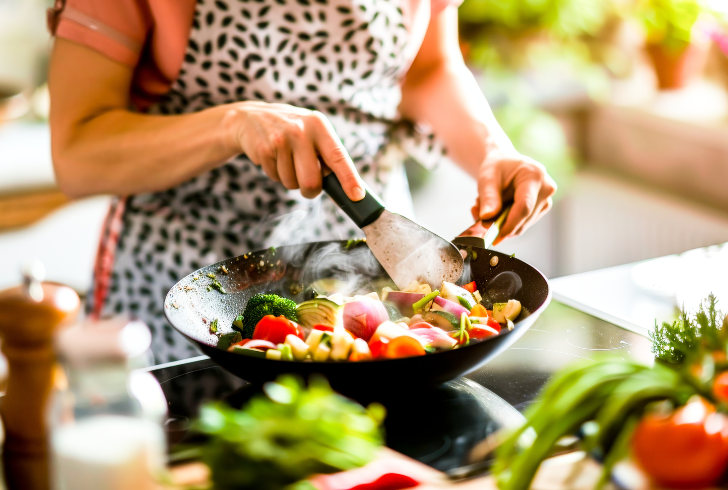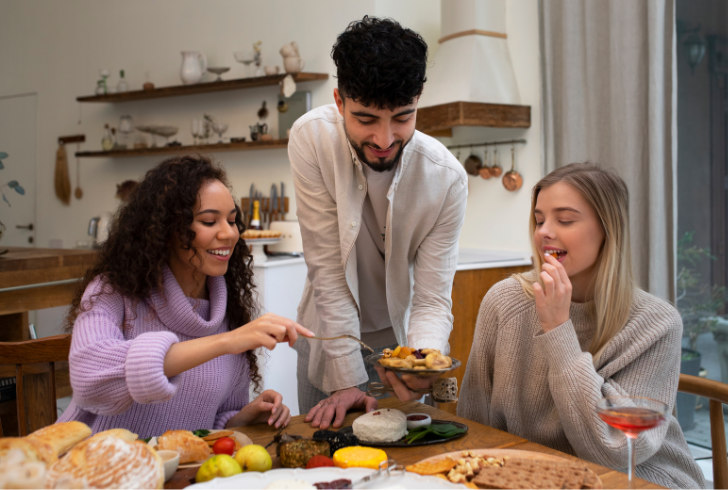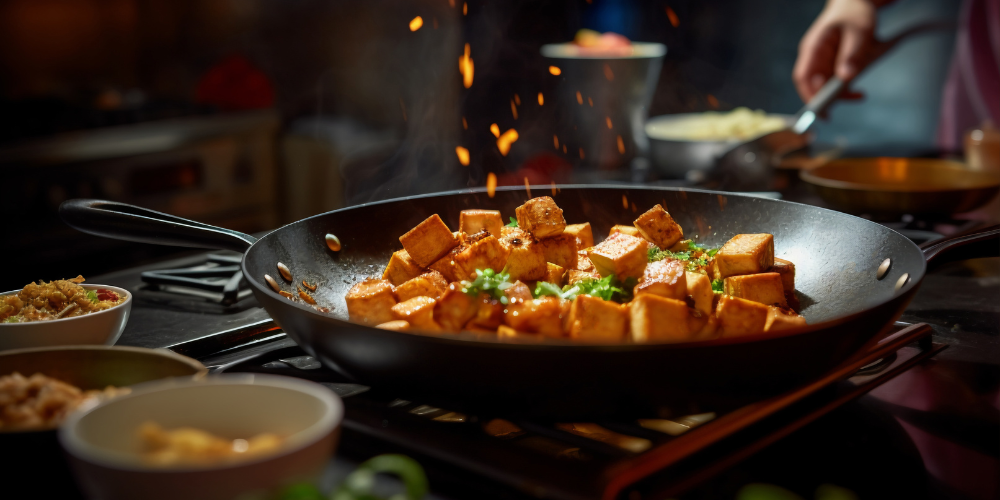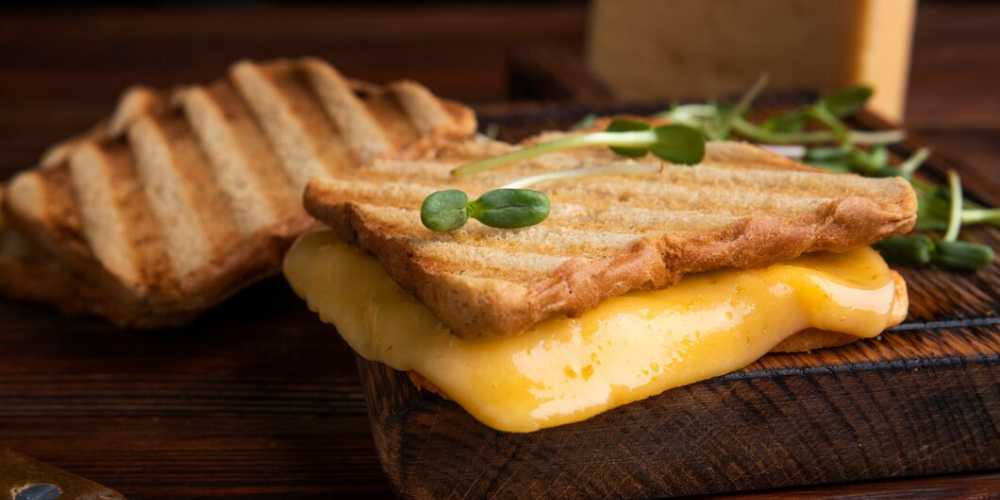Real healing doesn’t always come from a prescription or a hospital ward. Sometimes it begins with the smell of garlic meeting hot oil or the hum of a pot quietly bubbling on the stove. Families gathered around a table often find comfort no doctor can prescribe—warmth that fills the body and steadies the spirit.
At such times, cooking works like medicine—a slow, familiar ritual that feeds the heart as much as the body.
The Healing Power of Home Cooking
In hospitals, healing starts with tests and charts. At home, it begins with human touch—the sound of running water, the rhythm of a knife against a board, the slow swirl of a wooden spoon through stew. Each motion settles the mind. The repetition quiets the noise of the day. In that steady rhythm, the kitchen becomes a space where worry fades and care finds form.
Together, these simple ingredients—rice, beans, garlic, thyme—turn into a warm kind of hope, ladled into bowls and shared with love.
Cooking as Therapy

Freepik | Cooking transforms everyday tasks into mindful acts that nourish both body and soul.
Cooking invites calm through repetition and sensory focus. The process itself—touching, smelling, tasting—pulls you into the present moment. It’s more than feeding the body; it’s restoring balance. Within the walls of a kitchen, healing happens quietly, one meal—and one mindful breath—at a time.
During long working hours or emotionally demanding days, cooking provides grounding and structure. It offers a sense of control after uncertainty and satisfaction after stress. Over time, it becomes a peaceful habit—a reconnection with care at its most human level.
Family, Food, and the Rhythm of Care
Within many families, the kitchen stands as the heart of connection. The act of preparing and sharing food strengthens bonds, turning simple meals into lasting memories. Haitian kitchens, for example, embody this spirit deeply. Dishes like légume with militon and berejenn, okra, and soup joumou are more than meals—they are carriers of memory, gratitude, and identity.
Food in these spaces represents endurance and a sense of belonging. Generations connect through shared recipes and traditions—grandmothers’ guiding hands, mothers teaching the importance of tasting before serving. These meals preserve culture and provide continuity during times of uncertainty.
The Patience of Care
Healing often requires patience. Cooking teaches this through its unhurried rhythm. Each dish demands attention, time, and presence. The process cannot be rushed, and progress is seen through small but meaningful signs—laughter returning, color warming in the face, or appetite reviving after days of fatigue.
This slower rhythm mirrors an important truth—healing does not always come from doing more. Often, it comes from being present. These ordinary, quiet moments remind us that care extends far beyond data and prescriptions.
Food as Medicine

Freepik | Home-cooked food, made with intention, transmits love and care, restoring energy and appetite.
Across cultures, food has long been viewed as medicine. Modern life, filled with technology and measurement, sometimes obscures this truth. Yet, every home-cooked meal reaffirms it. Food nourishes not only the body but also the spirit. It reassures, comforts, and connects.
When a meal is prepared with intention, it carries emotional weight—a message of support and love. A home-cooked dish offers tangible results: energy returning, appetite reviving, or simply the peace of being cared for.
Key elements of healing through food include:
1. Mindful preparation that calms the mind and restores balance.
2. Nutrient-rich, familiar dishes that comfort the body.
3. Shared meals that strengthen relationships and emotional health.
These elements show that care and healing can exist far beyond clinical settings.
Rediscovering Healing at Home
There is quiet joy in creating food for loved ones. Healing extends beyond prescriptions—it lives in patience, presence, and the scent of garlic and onion carried through the air. It thrives in the warmth of the kitchen, in shared laughter, and in meals that carry love from one generation to the next.
The same hands that handle daily responsibilities can stir a pot of okra, lalo, or légume, offering hope and wholeness. True healing begins at home, where care is expressed through food, time, and attention—turning nourishment into therapy and love into recovery.



